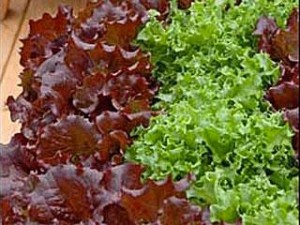The objective of this work was to study the growth potential of E. coli O157:H7 and Salmonella spp. in leafy vegetable extracts at different temperature conditions.
 Cocktails of five strains of E. coli O157: H7 and of S. enterica were used. Inoculated aqueous vegetable extracts were incubated at 8, 10, 16 and 20°C during 21 days. Microbial growth was monitored using Bioscreen C® . In spinach extract, results showed that for E. coli O157:H7 and Salmonella significant differences (p<0.05) for μabs (maximum absorbance rate) were obtained. For both pathogens, growth in chard was slightly lower. In contrast, iceberg lettuce and parsley showed the lowest values of μabs , below 0.008 h-1 . The coefficients of variance (CoV) calculated for the different replicates evidenced that at low temperature (8 °C) a more variable behaviour of both pathogens is expected (CoV > 180%).
Cocktails of five strains of E. coli O157: H7 and of S. enterica were used. Inoculated aqueous vegetable extracts were incubated at 8, 10, 16 and 20°C during 21 days. Microbial growth was monitored using Bioscreen C® . In spinach extract, results showed that for E. coli O157:H7 and Salmonella significant differences (p<0.05) for μabs (maximum absorbance rate) were obtained. For both pathogens, growth in chard was slightly lower. In contrast, iceberg lettuce and parsley showed the lowest values of μabs , below 0.008 h-1 . The coefficients of variance (CoV) calculated for the different replicates evidenced that at low temperature (8 °C) a more variable behaviour of both pathogens is expected (CoV > 180%).
This study provides evidence that aqueous extracts from vegetable tissues can result in distinct growth niche producing different response in various types of vegetables.
Finally, these results can be used as basis to establish risk rankings of pathogens and leafy vegetable matrices with relation to their potential growth.
Assessing the growth of Escherichia coli O157:H7 and Salmonella in spinach, lettuce, parsley and chard extracts at different storage temperatures.
J Appl Microbiol. [Epub ahead of print]
Posada-Izquierdo G, Del Rosal S, Valero A, Zurera G, Sant’ Ana A, Alvarenga VO, Pérez-Rodríguez F
http://www.ncbi.nlm.nih.gov/pubmed/26950043
